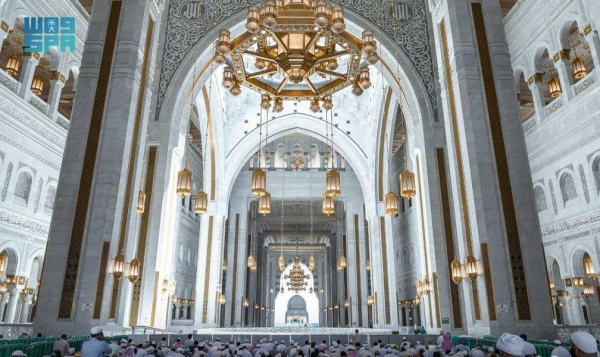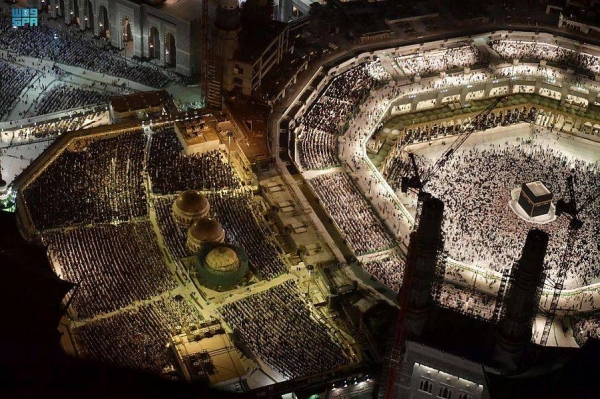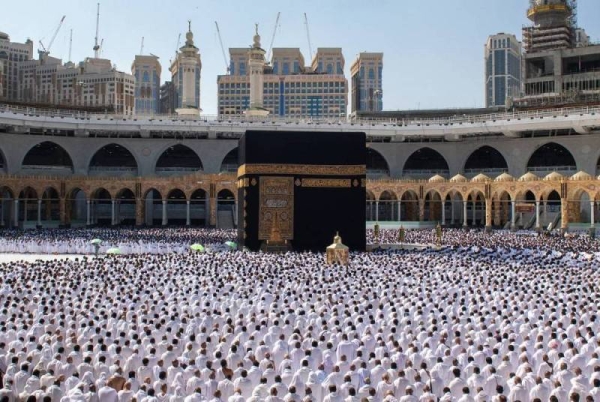
The Ministry of Interior has issued a new guide to preserve the security and safety of pilgrims and worshipers during the last 10 days of Ramadan.
The guide includes an update of several instructions which were announced at the beginning of Ramadan, to ease the ritual performance for pilgrims.
The Ministry has clarified the ways of reaching the Grand Mosque, as pilgrims are able to use the public transportation buses from King Abdulaziz International Airport (KAIA) in Jeddah, or from the car parkings to the public transportation stations in the central area around the Grand Mosque.
Pilgrims can also use taxis to reach the nearest location to the Grand Mosque, or the residency places, as well as through the Haramain station from KAIA to Al-Raseefa station in Makkah.
Pilgrims can walk on foot from the residential units in the central area and the neighborhoods adjacent to the Grand Mosque, or through the use of the frequent public transportation services located between the cars parking in Makkah and the public transportation stations in the central area.
It is possible for pilgrims to reach the Grand Mosque through a private car driven by non-Umrah pilgrims, who drive them to the nearest location to the mosque or to places of residence.
The non-Umrah pilgrims are only allowed to stop in the car parkings located in Makkah entrances, then pilgrims use the public transportation to reach their desired destination.
This is in order to facilitate the pilgrims" access to the central area around the Grand Mosque, as the Ministry said in the guide that the roads in the central area will be designated only for passers-by, where all kinds of vehicles, including motorbikes and bicycles, will be prohibited at all times.
Vehicles parked in locations affecting pedestrian movement will be towed, and their owner or authorized persons will be subjected to a traffic violation.
As for the directions for movement in the Grand Mosque and its squares, the pilgrims must abide by the directions determined by the security men, in addition to the importance of adhering to the directions through the doors of the Grand Mosque according to what is determined by the signboards.
It is worth mentioning that there are luminous panels placed on the main doors of the Grand Mosque in Makkah, and they indicate the status of the sites inside the Grand Mosque and show if there is a possibility of availability of places for prayer there.
The green light means that the pilgrims can enter due to the presence of available places, while the red light indicates that entry is prohibited due to space in all the sites being full.
The guide explains that pilgrims can reach the circumambulation (Tawaf) through the corridors leading to King Abdulaziz Gate, King Fahd Gate, Umrah Gate, and Peace Gate.
It is noteworthy that the grand floor has been designated to pilgrims with disabilities, where they can use electric vehicles.
Regarding prohibitions, pilgrims are not allowed to transport personal belongings to the Grand Mosque and its courtyards, or to hang them on the windows of the mosque from the inside and outside, or to leave them in the courtyards.
Collecting donations is forbidden in the Grand Mosque, the Ministry said, adding that pilgrims are not allowed to smoke, beg, or to engage in commerce (sell or buy).
Pilgrims are prohibited the use of electrical sockets (plugs) that have been allocated for maintenance work, for personal purposes, in order to avoid electrical short circuits.
The guide also includes a barcode for all internal and external parking lots, in which maps show how to reach the Grand Mosque while coming for Umrah or praying during Ramadan.
It also includes several other information that can be found through the following link: https://2u.pw/WyM7Wg












